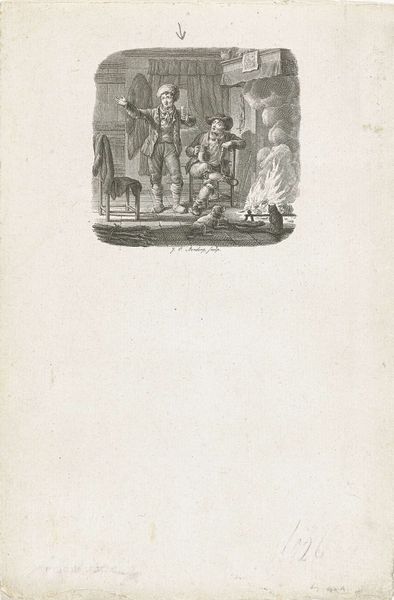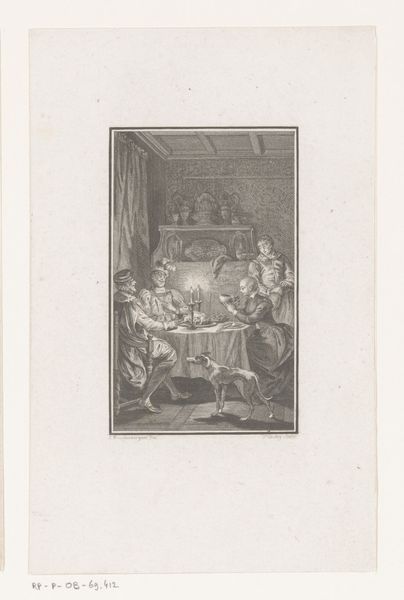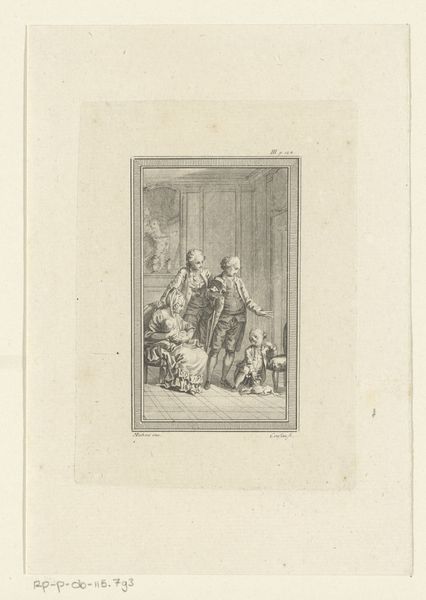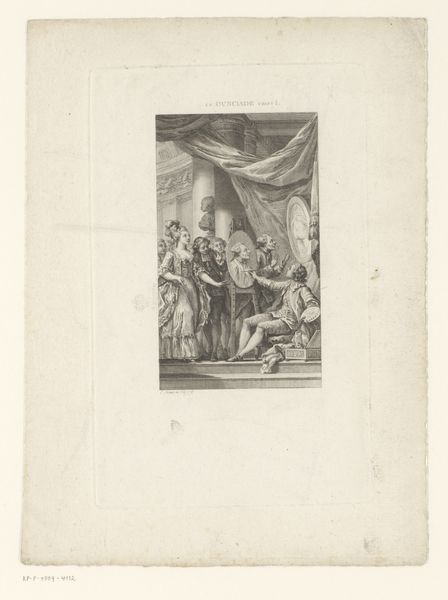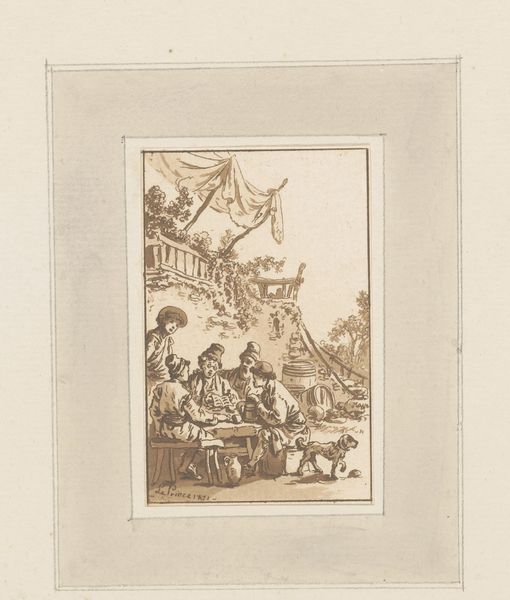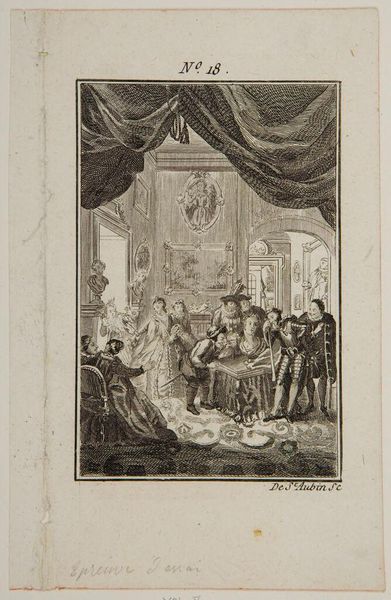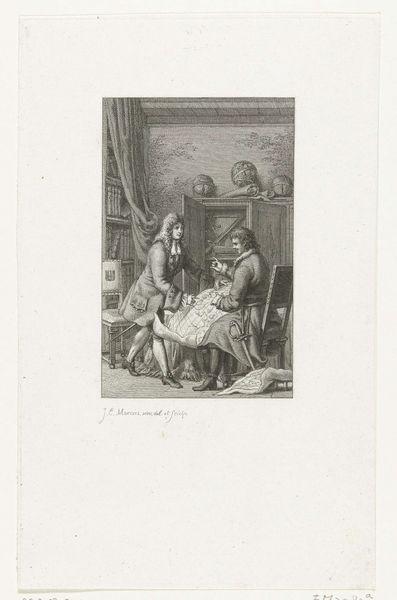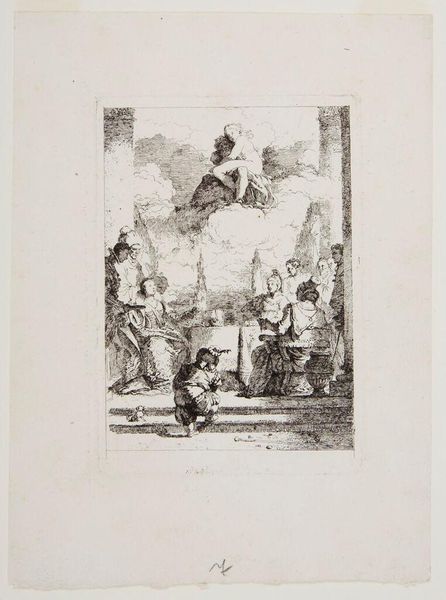
print, engraving
#
portrait
#
baroque
# print
#
asian-art
#
old engraving style
#
genre-painting
#
history-painting
#
engraving
Dimensions: height 103 mm, width 68 mm
Copyright: Rijks Museum: Open Domain
Editor: Here we have Pieter Schenk’s "Chinese mensen aan een gedekte tafel," dating from 1682 to 1711. It's a print, and there’s something very theatrical about the way these figures are presented. What's your interpretation of this scene? Curator: What strikes me is how this print, made during the Baroque period, participates in and perpetuates a specific Western gaze towards Asia. It's titled “Chinese People at a Set Table", but think about what isn't being shown. How is Schenk’s depiction shaping European perceptions of China, likely for an audience who would have no real experience with Chinese culture? It presents a very specific narrative. Editor: So, it's less about accuracy and more about projecting ideas? Curator: Precisely. Consider the luxuriousness depicted—the rich textiles, the laden table. This engraving positions the 'Orient' as a place of exotic excess, reinforcing power dynamics between Europe and other cultures. How might contemporary postcolonial theory help us to further unpack these power dynamics represented here? Editor: It makes me wonder about the artist's intentions. Was he deliberately trying to exoticize, or was he simply reflecting the biases of his time? Curator: That’s a crucial question. The line is often blurred, and intentions become less important than the impact of the artwork itself. We must consider how visual representations like these actively contribute to larger discourses on identity and difference. It shows us how easily misunderstanding and misrepresentation can occur. Editor: This really shifts how I see the print. It's not just a historical image; it's a statement about cultural exchange—or, rather, the imbalance of power within it. Curator: Exactly. Engaging with works like this is about acknowledging the complexities of cultural representation, inviting questions about who is represented, how, and why. And it provides a crucial glimpse into our own biases and how they’re shaped by historical narratives.
Comments
No comments
Be the first to comment and join the conversation on the ultimate creative platform.




